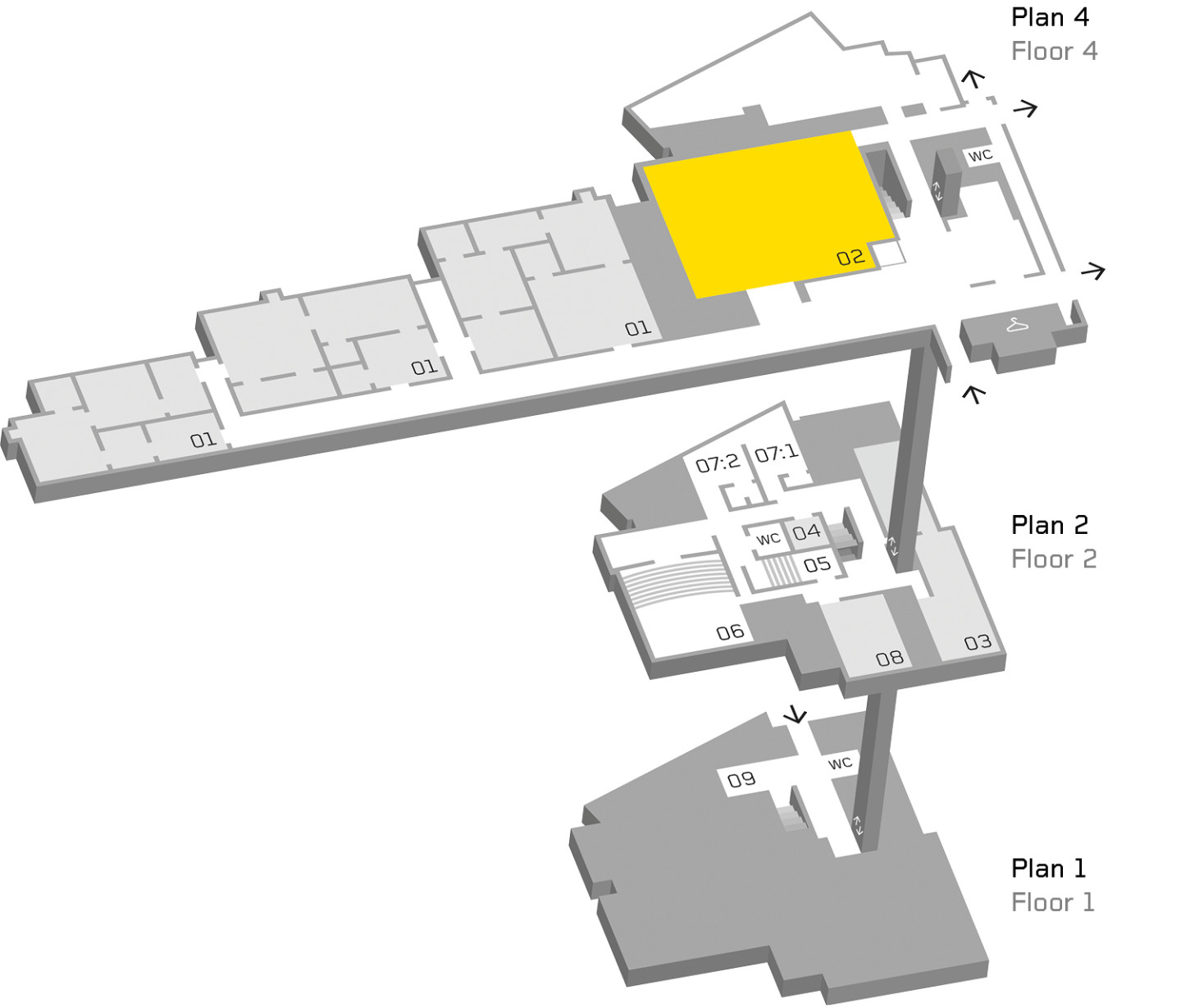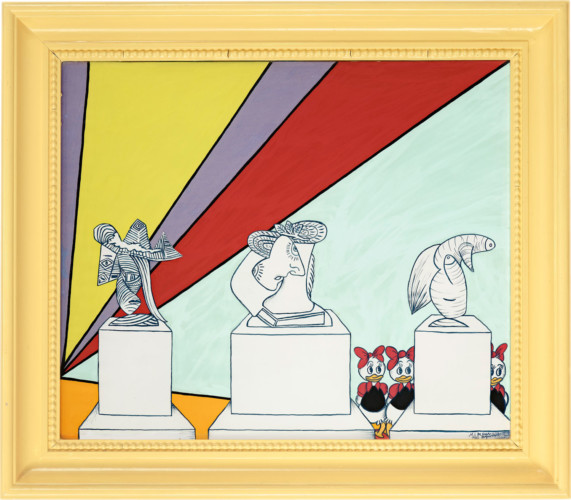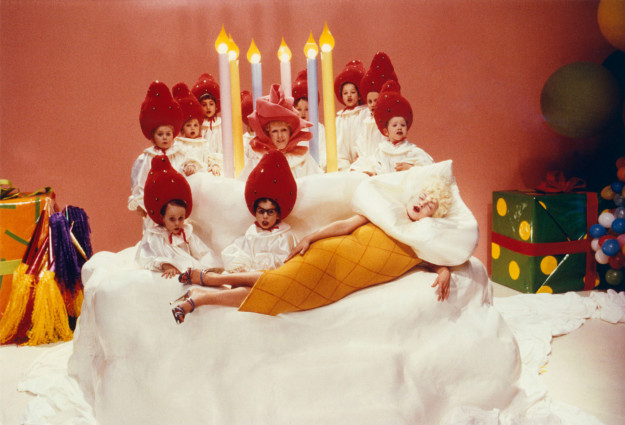
Marie-Louise Ekman, Dam och tapet, 1973 © Marie-Louise Ekman / Bildupphovsrätt 2017
Marie-Louise Ekman
17.6 2017 – 17.9 2017
Stockholm
Liberation and comic books
Marie-Louise Ekman belongs to a generation of Swedish artists who emerged in the politically turbulent 1960s. Many young artists in the 1960s were deeply influenced by popular culture, and comic books in particular. Ekman made series of silkscreen prints, stitched fishcakes out of shiny, pink silk, built enclosed worlds out of miniature objects, and borrowed the format of comic strips for her own serialised paintings. In her early works, she also appropriated images from The Phantom, Donald Duck and Ernie Bushmiller’s Nancy. Ekman’s protagonists, however, are Minnie and Daisy, together with April, May and June, rather than their male friends.
At Home With a Lady
Ekman’s works have a strong narrative focus. In cramped pictorial spaces with warped one-point perspectives, dreams, passions and disappointments run amok in a heightened reality. In the series At Home With a Lady from 1973, a lonely woman acts out her desires, captive in an interior, like an animal in the zoo, reliving the same reality day after day. In Striptease (1973), this blonde female figure is transformed step-by-step, via ape and man, into a bird that flies away. This is not a sexually charged act of undressing, but a way of stripping off roles and entering and exiting states of mind. In other paintings, windows and sinkholes open up to other worlds. The women’s orifices evolve into exotic landscapes with oceans lined by palm trees, and beyond the windows are other windows, where new wondrous scenes are enacted.
Monuments
During the early 1980s, Ekman appropriated the styles of other artists, creating works where Picasso’s women and Daisy Duck vie for space. In these paintings, Olle Baertling’s terse compositions provide the landscape for swaddled infants, wounded fledglings and dissected crocodiles on pedestals. In a large series of recent works, shown for the first time in this exhibition, Ekman instead revisits her own works from the 1970s. With her grandchildren as muses, she moves in and out of the familiar pictorial scenes. The children are here given free rein to paint over and add their own images. In other pictures, the rooms are bare, and where there used to be tables and chairs, all that remains is a play of shadows.
Watch Ekman’s movies
After eight feature films and numerous TV productions, Ekman definitely sees herself as an artist who makes films, rather than a film director. The exhibition features The Dramatic Asylum (2013–14), a drama series in 50 episodes, which she filmed using her mobile. With humour and painful precision, Ekman scrutinises the theatre, its power relationships and her own role as director and colleague. By contrast, Barnförbjudet (The Elephant Walk, 1979), Ekman’s first feature movie, is a sensational show with marches and musical numbers, where scales and meanings are displaced, while the kids stoically observe the affected manners of the grownups.
Curator: Jo Widoff
Video introduction Marie-Louise Ekman
The exhibition is on the 4th floor















